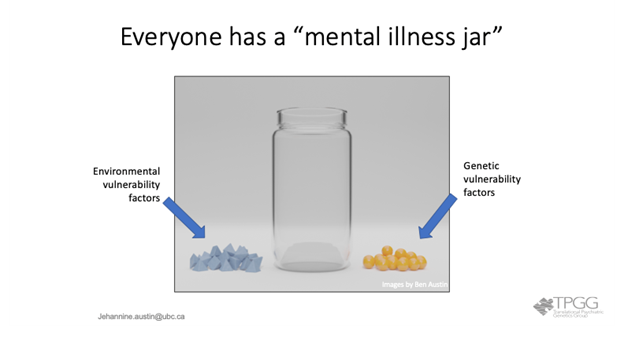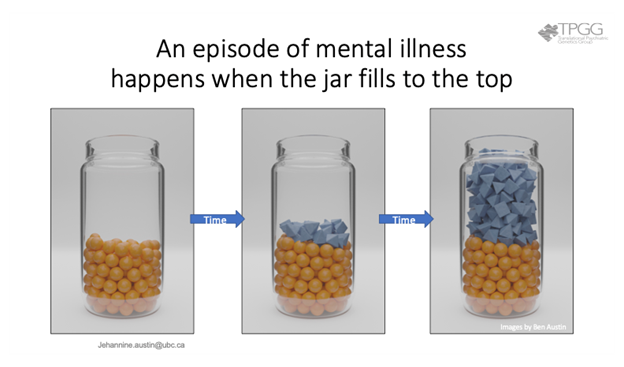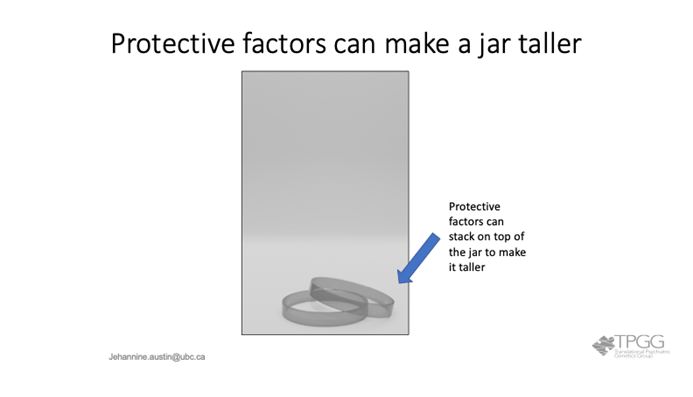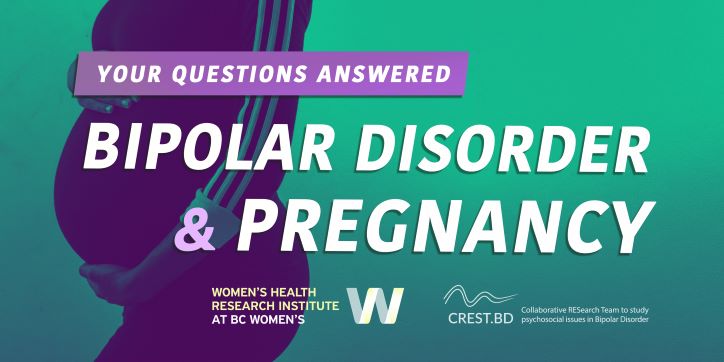This is the third and final blog in our series on reproductive health and bipolar disorder, in collaboration with the UBC Women’s Health Research Institute (WHRI). In this series, we will be drawing from our World Bipolar Day “Ask Me Anything” and WHRI members Dr. Catriona Hippman and Dr. Jehannine Austin to answer your pressing questions about reproductive health and bipolar disorder. To learn more about women’s health research in BC, check out WHRI.org.
In our last post as part of this series on reproductive health and bipolar disorder, we answered your questions on taking medication for bipolar disorder throughout pregnancy and the postpartum period. But what about other strategies to manage bipolar disorder throughout pregnancy? Here, we’ll answer your questions about experiencing mood disorder symptoms in pregnancy, and how pregnant people with bipolar disorder can live well.
-
Is it true that pregnant people are more likely to experience mood disorder symptoms?
Current research suggests that pregnant people may be less likely to experience a mood disorder. However, the risk of a mood episode directly after birth is increased. Postpartum depression is very common: 10-15% of pregnant people experience it. Postpartum psychosis, however, is rarer, with the chances of experiencing it at 1/1000. Both postpartum depression and postpartum psychosis are treatable illnesses, and parents and babies do very well with the appropriate support. For individuals with bipolar disorder, the chances of experiencing postpartum depression and/or psychosis are higher; there is a ~25-50% chance for postpartum depression for people with bipolar disorder (which means 50-75% chance NOT to develop postpartum depression) and ~30% chance of postpartum psychosis (or ~70% chance NOT to develop postpartum psychosis).
Note, that these are general risk factors, and that risk does not mean you are guaranteed to experience a mood disorder episode during pregnancy or in postpartum. It is more than possible to go through pregnancy, childbirth, and postpartum without experiencing a mood episode.

Dr. Catriona Hippman is recruiting patient partners for a study aiming to improve the support available through the healthcare system for those needing hospitalization for postpartum mental illness. This work is particularly relevant to people with bipolar disorder, given the higher chances of experiencing postpartum depression and/or psychosis. Reach out to Dr. Catriona Hippman (catriona.hippman@ubc.ca) or Prescilla Carrion (prescilla.carrion@ubc.ca) if you have been hospitalized for postpartum mental illness and you’re interested in contributing to this work!
-
How can I prevent mood episodes during pregnancy and postpartum?
When we think of managing the risk of mood episodes in life generally, but also in pregnancy, one useful model can be the “jar model” of mental illness.



Adapted by Ben Austin from How to Talk with Families About Genetics and Psychiatric Illness. Copyright (c) 2011 by Holly Peay and Jehannine Austin. Used with permission of the publisher, W. W. Norton & Company, Inc. All rights reserved
Using the jar model, we can picture the risk of experiencing a mood episode as an equation of vulnerabilities, stressors, and protective factors. Vulnerabilities, such as genetic risk, and stressors, such as having a busy period at work, can “fill up” our jar. In contrast, protective factors, like strong social support networks, can counteract, or limit the impact of stressors in our lives, allowing us to effectively manage our stressors and vulnerabilities to prevent a mood episode.
So, what are protective factors? And how do they apply to mood episodes/bipolar disorder? We can remember protective factors in pregnancy (and life generally) with the word NEST-S:
![]()
As Dr. Catriona Hippman highlights in our AMA from 2021: “These can obviously be tricky to implement in the perinatal period (sleeping while the baby sleeps isn’t as simple as it sounds), and some are particularly tough during this pandemic, but setting small, achievable goals for each of these mental health supports can make a big difference.”
If you’re looking for more resources on managing bipolar disorder during pregnancy, make sure to check out the following:
- Our #TalkBD with Keri Guelke and Dr. Catriona Hippman on Pregnancy & Bipolar Disorder
- BC Women’s Reproductive Mental Health Website
- Alessandra Torresani’s EmotionAL Support Podcast.
- The Pacific Post Partum Support Society Website
- This MotherToBaby Fact Sheet on Lithium and Pregnancy
Strengthening psychosocial support strategies, like exercise and social support, can make a big difference in living well with bipolar disorder. Tools that help assist with these aspects of life don’t necessarily need to be specific to pregnant people. Our team at CREST.BD is recruiting participants for the PolarUs app, a wellness tool for people with bipolar disorder that focuses on self-management and improving quality of life. Interested in becoming a research participant and testing the PolarUs app? Find out more details and register for the study here.




A little disappointed this seemed more about preventing mood swings than for women already diagnosed with Bipolar Disorder of some sort. You always hear things about Bipolar meds and pregnancy and so many women still try to do that to their detriment. I was hoping the wellness could speak towards this audience as well.
Mahalo.
Hi there,
Actually, the tools described in this post can also be used by women already diagnosed with Bipolar Disorder (with or without medication for Bipolar Disorder). I’m not sure, but perhaps this post that focused on taking medication for BD in pregnancy could address some more of your questions? https://www.crestbd.ca/2022/08/17/reproductive-health-and-bipolar-disorder-medication-pregnancy-bipolar/
Warmly, Dr. Catriona Hippman